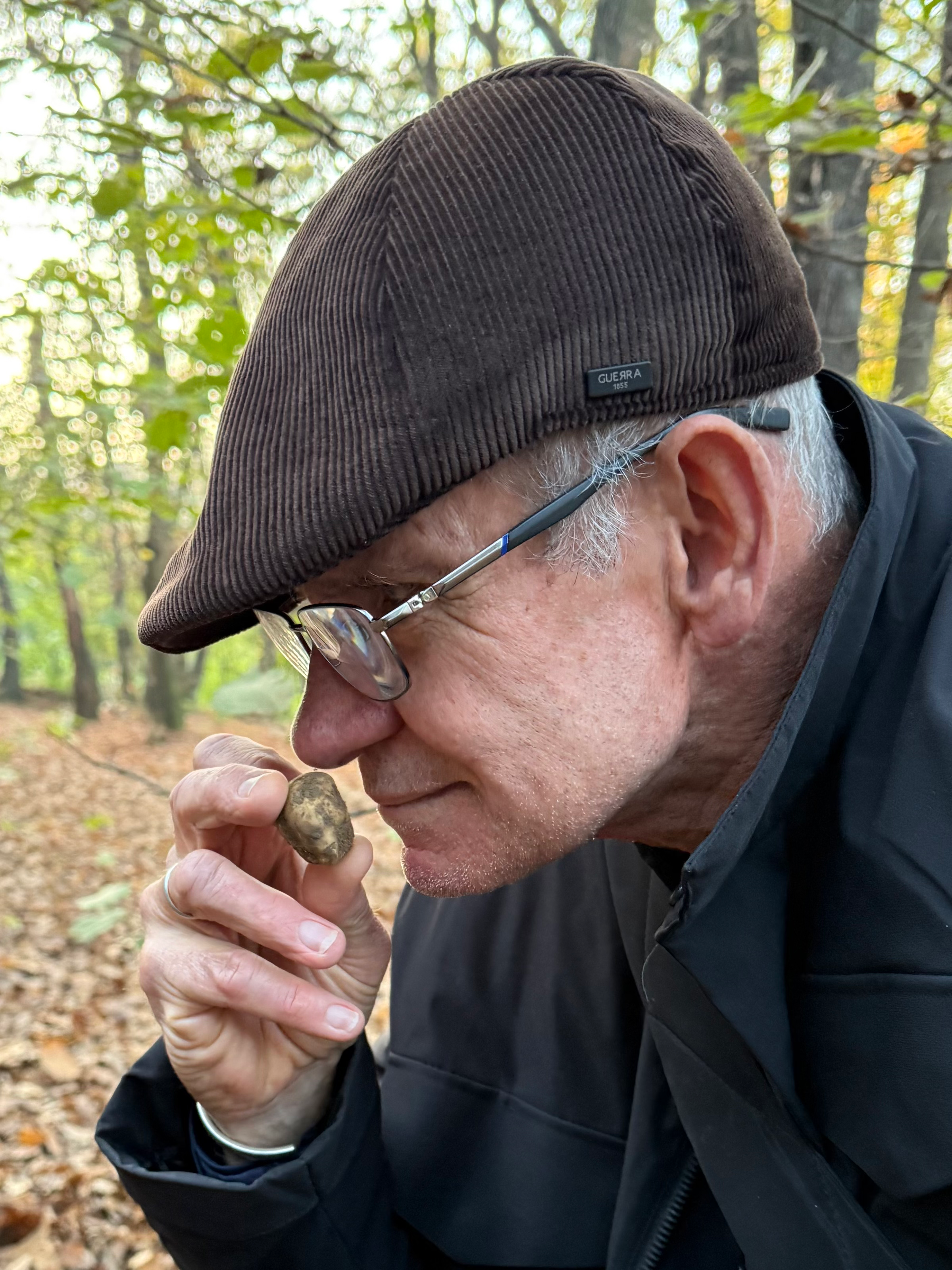Mastering Early Season Truffles: Your Essential Guide
- Carmine Di Campli

- Apr 26, 2024
- 3 min read
Updated: Apr 27
Ripe Australian Winter Truffle will always have black inside flesh with lovely white veins. The center picture is a very unripe tuber melanosporum.
So, you're itching to dive headfirst into truffle season right from the start? Well, buckle up, because we're about to embark on a truffle-tastic journey together! Fear not, fellow truffle aficionado, for we're as giddy about truffles as you are, and we can't wait to indulge in their goodness straight from the ground. But before you take the plunge into culinary paradise, let us sprinkle some truffle know how your way. And don't forget, unless we say otherwise, we are always talking about tuber melanosporum, the Australian Black Winter Truffle. Ready? Set? Lets Go!
Rule One: Sniff Out the Best Sniffs
First things first – let your schnoz lead the way! Seek out truffles with aromas so intense they practically tap dance on your olfactory receptors. Even in the early season, there are rare gems hiding out there with a strong enough aroma to knock your socks off. Trust us, these are the truffles you want to snag with gusto!
Rule Two: Peek Inside for a Surprise
Make sure the truffle's flesh is a deep, luxurious black – that's your golden ticket to knowing it is ripe. Every truffle should sport what we fondly refer to as a 'farmer's nick.' You see, when a truffle is discovered, it's left nestled in the earth until the farmer can delicately score the skin, unveiling the treasure within. For Australian Black Winter truffles, this means the inner flesh, known as the gleba, should boast an enchanting black hue, adorned with delicate white veins.
Rule Three: Freshness is the Name of the Game
When it comes to truffles, at any time of the season, fresher is definitely better – it's like tasting culinary lightning in a bottle! Aim for truffles that are just a day or two out of the ground, especially when it comes to early season truffles because most will only have a delicate aroma. While truffles can hang out in the fridge for a couple of weeks, nothing beats the exhilarating flavor explosion of a freshly harvested truffle. It's like a taste sensation straight from the truffle gods themselves!
Rule Four: Feel the Quality
When selecting your truffle, trust your hands as much as your nose. A quality truffle should feel firm and substantial, indicating optimal ripeness and flavor. Anything squishy or soft could spell trouble, so stick to truffles that exude confidence and quality.
Beyond the Basics: Truffle Terroir
Now that you've got the essentials down, let's delve into the fascinating world of truffle terroir. Just like fine wine or artisanal coffee, the origin of your truffle matters. Each state imparts its own unique character and flavor profile to Australian truffle, so don't be afraid to explore and discover your personal favorites.
Farm to Table: Know Your Grower
Take it a step further and get to know the farms behind your favorite truffles. From cultivation techniques to environmental influences, every aspect contributes to the truffle's distinctive personality. Plus, building a connection with your local growers adds an extra layer of appreciation to your culinary adventures. Now that's paddock to plate.
Tree Talk: Under the Canopy
Believe it or not, the type of tree under which a truffle is found can influence its flavor profile. Whether it's the sturdy oak or the humble hazelnut, each tree imparts its own subtle nuances to the truffle's character. It's a fascinating aspect of truffle cultivation that's definitely worth exploring.
In Conclusion: Spread the Early Season Truffle Love
And there you have it – your crash course in early season truffle hunting! With the start of the Australian truffle season just around the corner, we hope this guide adds a sprinkle of joy to your truffle escapades. Share it with your fellow truffle enthusiasts, and if you've got any truffle stories or questions, we're all ears. Until next time, happy truffling, friends!
Truffle Cheers & Buon Appetito, Carmine











Comments